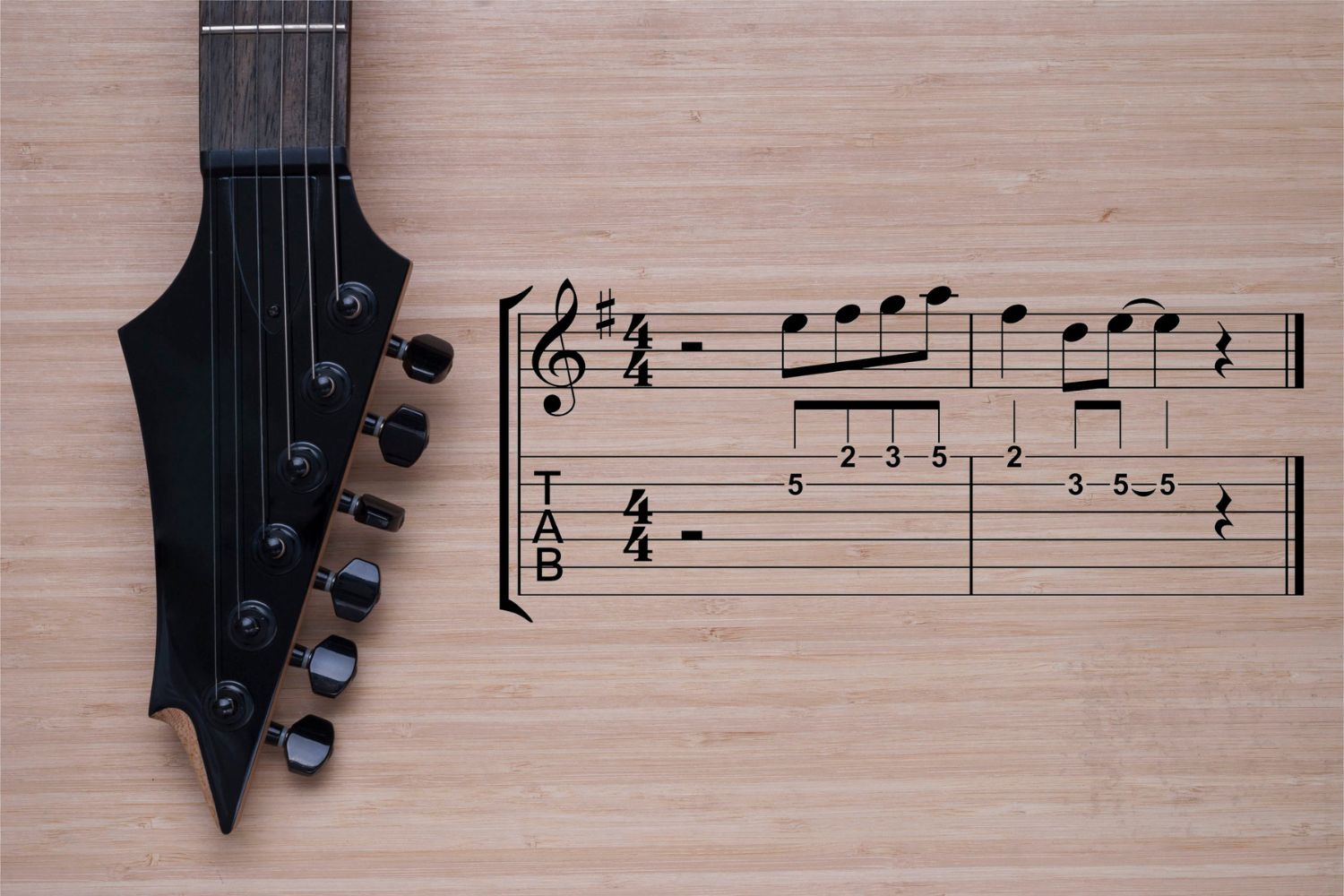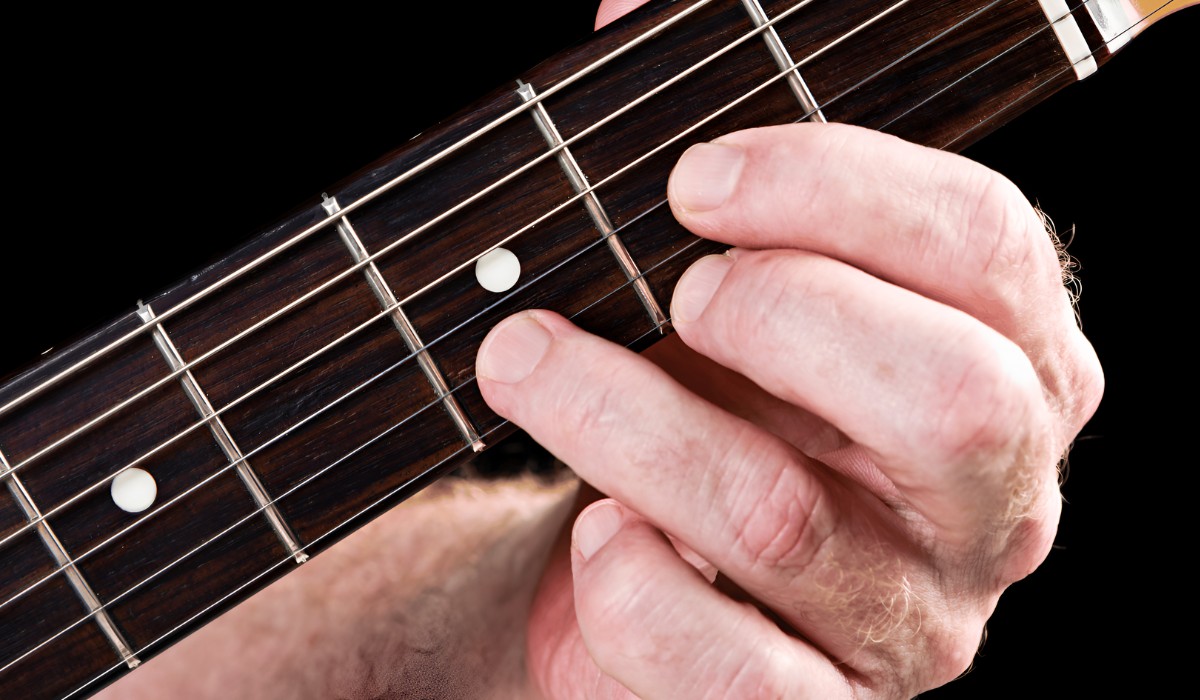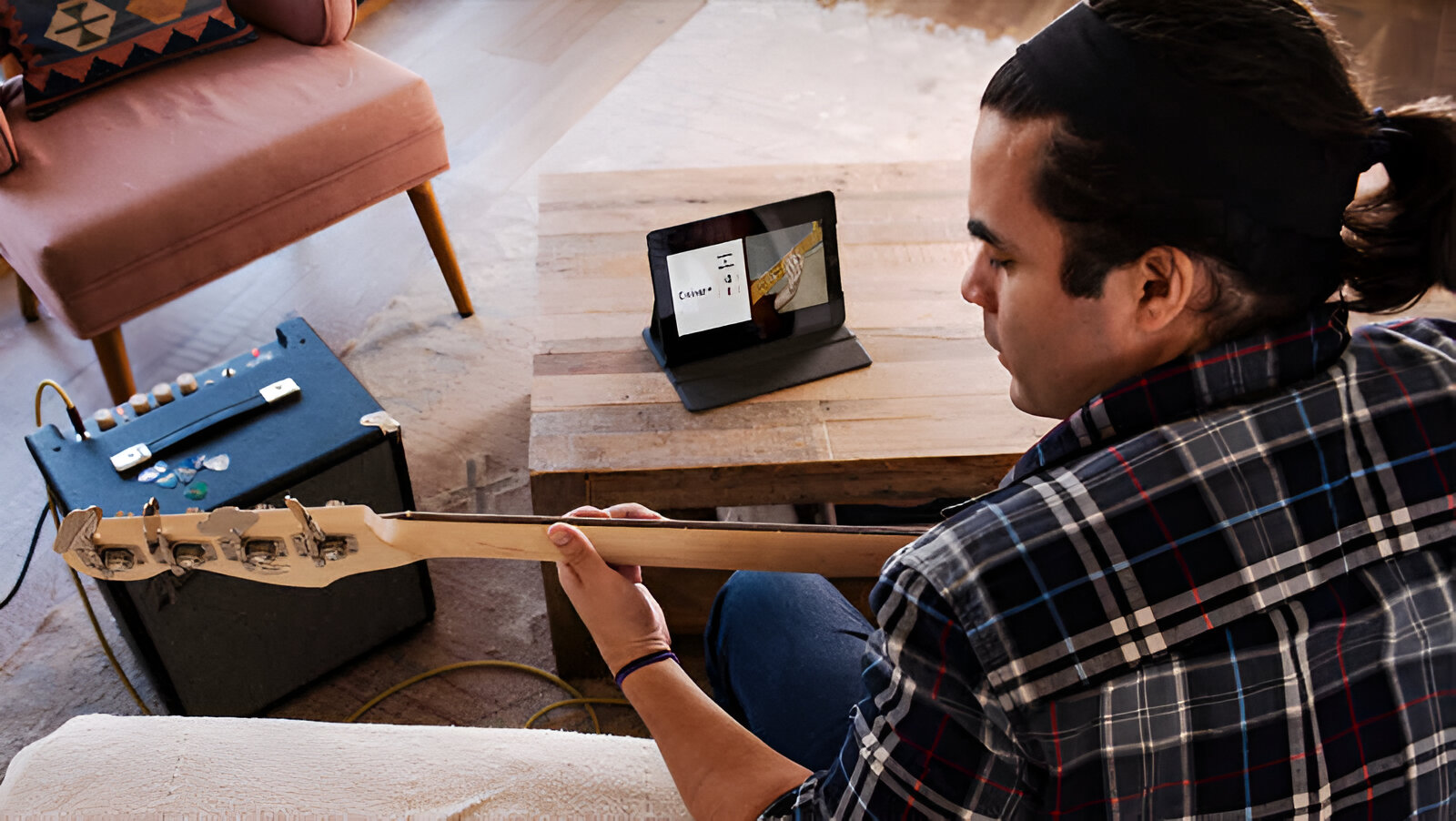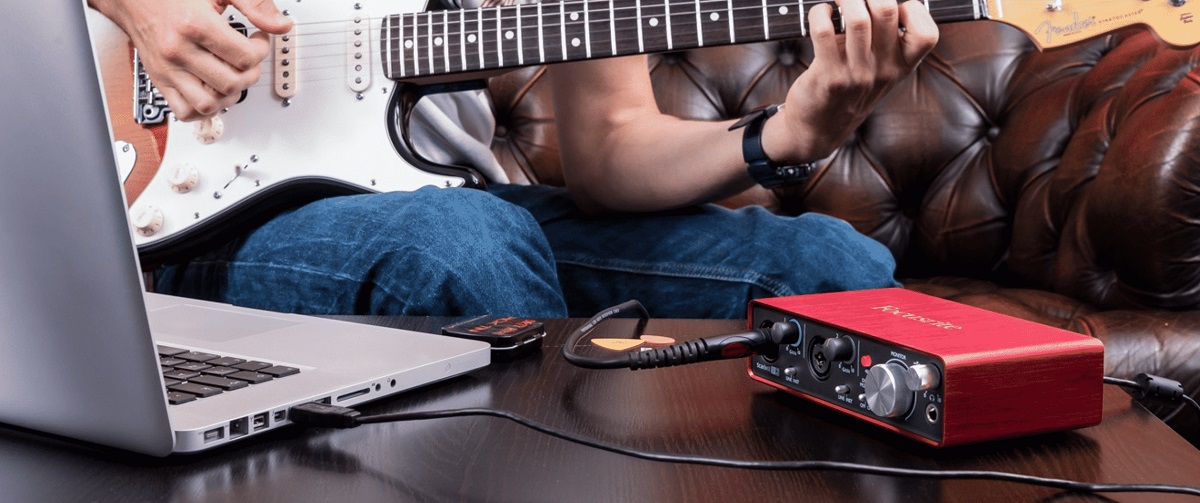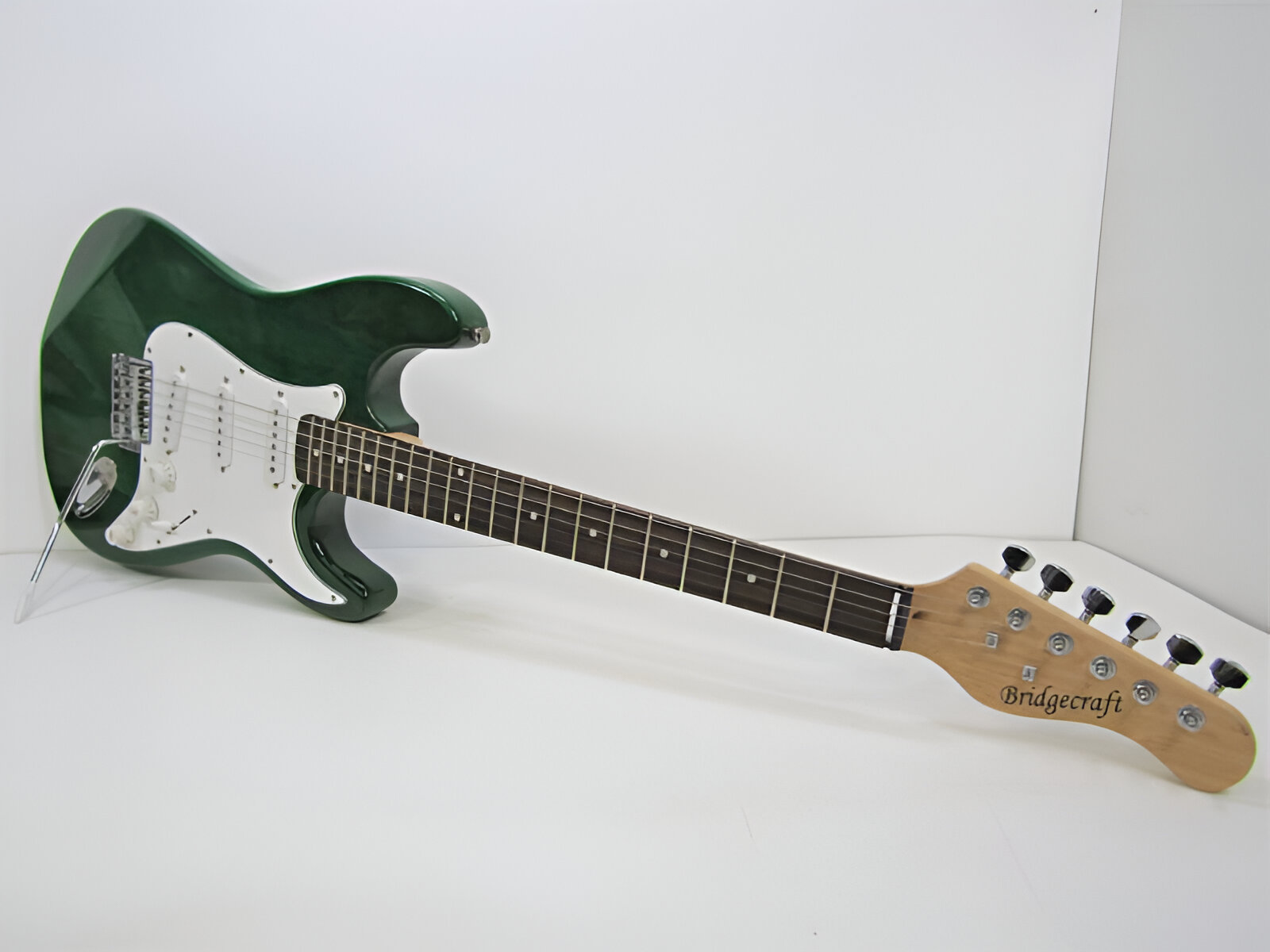Introduction
Are you ready to unlock the secrets of playing your favorite songs on the electric guitar? Whether you're a beginner or an experienced guitarist, learning how to read tabs can open up a world of musical possibilities. Tablature, commonly known as tabs, provides a straightforward way to understand and replicate the music you love without having to decipher traditional sheet music.
In this comprehensive guide, we'll delve into the fundamentals of guitar tabs, breaking down the notation system, deciphering symbols, and offering valuable tips to enhance your tab-reading skills. By the end of this journey, you'll be equipped with the knowledge to confidently tackle any tab and bring your favorite tunes to life on your electric guitar. So, grab your guitar, get comfortable, and let's embark on this exciting musical adventure together.
Understanding how to read tabs is a valuable skill that can empower you to learn new songs, experiment with different playing styles, and even create your own music. Whether you're drawn to the raw energy of rock, the soulful melodies of blues, or the technical prowess of metal, tabs provide a universal language that transcends musical genres, making it accessible to guitar enthusiasts of all levels.
So, without further ado, let's dive into the world of guitar tabs and uncover the secrets they hold. Get ready to elevate your guitar playing and expand your musical horizons as we explore the art of reading tabs on the electric guitar.
Understanding the Basics of Guitar Tabs
Before we delve into the intricacies of reading guitar tabs, it’s essential to grasp the fundamental structure of this notation system. Unlike traditional sheet music, which conveys musical information through staff notations and rhythmic symbols, guitar tabs offer a simplified visual representation of the instrument’s fretboard. Each line in a tab corresponds to a string on the guitar, with numbers indicating the frets to be pressed. This straightforward format enables guitarists to quickly learn and replicate songs without extensive music theory knowledge.
At first glance, a guitar tab may appear daunting, with numbers and symbols scattered across multiple lines. However, with a bit of guidance, deciphering this notation becomes remarkably intuitive. A standard guitar tab consists of six horizontal lines, each representing a string on the instrument, with the thinnest string (high E) at the top and the thickest string (low E) at the bottom. As you read from left to right, the numbers on the lines indicate which frets to press on the corresponding strings, allowing you to recreate the melody, chords, and riffs of a song.
While tabs provide a practical means of learning songs, it’s important to note that they do not convey rhythmic information as explicitly as traditional sheet music. In some cases, tabs may include rhythmic notation, but their primary focus is on showcasing the fret and string combinations required to play a piece. As you become more proficient in reading tabs, you’ll develop a sense of rhythm by listening to the song and incorporating the timing into your playing.
Understanding the basics of guitar tabs sets the stage for a fulfilling musical journey, enabling you to explore a vast repertoire of songs and develop your guitar skills. With this foundational knowledge in place, you’re ready to venture deeper into the world of tablature and unlock the potential of your electric guitar.
Reading the Strings and Frets
As you embark on your tab-reading journey, mastering the art of interpreting the strings and frets is crucial for effectively translating musical notation into captivating guitar performances. Each string on the guitar is represented by a line in the tab, with the numbers on these lines indicating the frets to be pressed. Understanding this visual mapping is the key to unlocking the potential of guitar tabs and harnessing their power to learn and play music.
Starting from the top line of the tab, which represents the high E string, and descending to the bottom line, which corresponds to the low E string, you’ll encounter numbers placed on the lines. These numbers denote the frets to be pressed on the respective strings. For instance, if you see the number “3” on the high E string line, it signifies that you should press down the third fret on the thinnest string to produce the desired note.
When reading tabs, it’s important to pay attention to the sequence of numbers on each string, as this sequence dictates the order in which you play the notes or chords. For instance, if you encounter the numbers “5-7-5” on the B string line, you would play the notes by pressing the fifth fret, then the seventh fret, and finally returning to the fifth fret on the B string. This sequential arrangement empowers you to replicate the melodic and harmonic elements of a song with precision.
Furthermore, as you navigate the fretboard through tabs, you’ll encounter open strings denoted by the number “0.” This symbol indicates that the string is played without pressing down any frets, resulting in the resonant sound of the open string. Incorporating open strings into your playing adds depth and resonance to the music, enriching your interpretations of various songs.
By familiarizing yourself with the visual cues of strings and frets in guitar tabs, you’ll develop a keen understanding of how to translate musical ideas into tangible guitar performances. This foundational knowledge forms the cornerstone of your tab-reading proficiency, paving the way for a fulfilling and expressive musical journey on the electric guitar.
Notation for Techniques and Articulations
While the basic structure of guitar tabs revolves around representing strings and frets, these notations also encompass a diverse array of techniques and articulations that add depth and expression to your playing. As you delve deeper into the world of tablature, you’ll encounter symbols and annotations that capture the nuances of guitar performance, allowing you to infuse your renditions with dynamics, embellishments, and stylistic flourishes.
One of the most commonly used symbols in tabs is the “bend” notation, denoted by an upward arrow (e.g., 7^). This symbol instructs the guitarist to bend the string at the specified fret, altering the pitch of the note and infusing it with emotive intensity. Bends are a hallmark of expressive guitar playing, enabling you to imbue your melodies and solos with soul-stirring tonal variations.
Another essential technique indicated in tabs is the “slide,” represented by a slash (/) or an “s” between two fret numbers (e.g., 5/7 or 5s7). Slides involve smoothly transitioning from one fret to another, either ascending or descending, creating seamless melodic transitions and evocative phrasing. Mastering the art of sliding enhances the fluidity and expressiveness of your guitar performances.
Hammer-ons and pull-offs, denoted by “h” and “p” respectively, are integral to the vocabulary of guitar tabs. A hammer-on entails striking a note and then, without re-picking the string, using a finger to press down onto a higher fret to produce another note. Conversely, a pull-off involves sounding a note by plucking the string and then “pulling off” to a lower fret with another finger, producing a distinct articulation. These techniques enrich your playing with legato phrasing and rapid note transitions.
Additionally, tabs often incorporate symbols for vibrato, palm muting, harmonics, and other expressive elements that contribute to the nuanced interpretation of music on the electric guitar. By familiarizing yourself with these notations and honing your command of these techniques, you’ll elevate your guitar playing to new heights, infusing your renditions with authenticity and emotive resonance.
Understanding the notation for techniques and articulations in guitar tabs empowers you to imbue your performances with expressive flair, allowing you to convey the subtleties and intricacies of a song with finesse and creativity. As you integrate these techniques into your playing, you’ll unlock the full potential of guitar tabs as a versatile and dynamic musical resource.
Common Symbols and Abbreviations
As you navigate the realm of guitar tabs, you’ll encounter a diverse assortment of symbols and abbreviations that enrich the notation system, providing valuable insights into the execution and interpretation of musical passages. Familiarizing yourself with these common symbols and abbreviations is essential for developing a comprehensive understanding of guitar tabs and harnessing their full potential as a learning tool for the electric guitar.
One of the foundational symbols in tabs is the “x,” which denotes muted or deadened strings. When you encounter an “x” on a string line, it signifies that the string should be struck but not allowed to ring out, producing a percussive or muted effect. This technique is often employed in rhythmic passages and power chords to add rhythmic emphasis and dynamic contrast to the music.
The symbol “/” is frequently utilized to indicate a slide between two notes, facilitating smooth transitions and melodic continuity. Whether executing a subtle shift or a dramatic glissando, mastering the interpretation of slide notations enhances the fluidity and expressiveness of your guitar performances, allowing you to seamlessly navigate the fretboard with finesse.
Another prevalent abbreviation in tabs is “PM,” representing palm muting. This technique involves lightly resting the edge of the picking hand’s palm on the strings near the bridge, resulting in a subdued and percussive timbre. Palm muting is commonly employed in rock, metal, and punk genres to imbue riffs and power chords with a distinctive, tight-knit sound, adding a layer of rhythmic intensity to the music.
Furthermore, the use of numbers within parentheses, such as (7), indicates a ghost note or a muted string. Ghost notes are subtle percussive elements produced by lightly striking the string without fully fretting a note, contributing to the rhythmic drive and groove of a song. Incorporating these nuanced elements into your playing enhances the dynamic range and rhythmic complexity of your guitar interpretations.
By acquainting yourself with these common symbols and abbreviations, you’ll expand your proficiency in interpreting and executing guitar tabs, unlocking a wealth of expressive possibilities on the electric guitar. These symbols serve as gateways to musical creativity, enriching your understanding of songs and empowering you to infuse your renditions with authenticity and depth.
Tips for Reading Tabs More Effectively
Mastering the art of reading guitar tabs is a transformative journey that empowers you to access a vast repertoire of music and express your creativity on the instrument. To enhance your tab-reading skills and extract the utmost value from this notation system, consider the following tips that will elevate your proficiency and fluency in interpreting guitar tabs.
- Listen to the Song: Before diving into a tab, familiarize yourself with the song by listening to the original recording. This auditory context will provide invaluable insights into the song’s structure, rhythm, and nuances, allowing you to approach the tab with a deeper understanding of the music.
- Visualize the Fretboard: As you read a tab, visualize the guitar fretboard and the corresponding finger positions. This mental mapping will enhance your spatial awareness and facilitate seamless transitions between frets and strings, fostering a more intuitive and fluid playing experience.
- Focus on Rhythmic Feel: While tabs may not explicitly denote rhythm, strive to internalize the rhythmic feel of the song as you practice. Pay attention to the song’s groove and phrasing, and strive to infuse your playing with the inherent rhythmic character of the music.
- Experiment with Techniques: Embrace the opportunity to experiment with various guitar techniques and articulations indicated in the tabs. Whether it’s incorporating bends, slides, or hammer-ons, these techniques add depth and expressiveness to your playing, enriching your interpretations of the music.
- Seek Visual Patterns: Look for visual patterns and repetitions within the tab, as these can signify recurring motifs, chord progressions, or melodic themes. Identifying these patterns streamlines the learning process and enhances your ability to internalize and execute different sections of the music.
- Practice Incrementally: Break down complex passages into smaller segments and practice them incrementally. By mastering smaller sections before tackling the entire piece, you’ll build confidence and proficiency while honing your technical and musical abilities.
- Embrace Creativity: While tabs provide a framework for learning and playing songs, don’t hesitate to infuse your interpretations with creativity. Explore variations in dynamics, phrasing, and tonal nuances to imbue the music with your unique artistic sensibilities.
By integrating these tips into your tab-reading practice, you’ll cultivate a holistic approach to interpreting guitar tabs, fostering musical growth and expanding your artistic horizons on the electric guitar. Embrace the journey of discovery and enjoy the process of unraveling the musical tapestries woven within the realm of guitar tabs.
Conclusion
Congratulations on embarking on this enriching exploration of guitar tablature. As you conclude this journey, you’ve gained invaluable insights into the art of reading tabs on the electric guitar, equipping yourself with the knowledge and skills to unlock a treasure trove of musical possibilities. By unraveling the nuances of tab notation, understanding string and fret representations, deciphering techniques and articulations, familiarizing yourself with common symbols, and embracing effective tab-reading strategies, you’ve embarked on a transformative musical odyssey.
As you continue to hone your tab-reading proficiency, remember that patience, practice, and a spirit of creativity are your steadfast companions. Embrace the joy of learning new songs, the thrill of mastering intricate passages, and the satisfaction of infusing your interpretations with personal flair. Whether you’re delving into timeless classics, contemporary hits, or crafting your own compositions, the art of reading guitar tabs empowers you to express your musical identity and connect with the heart of the music.
As you pick up your electric guitar and delve into the next tab, carry with you the confidence and passion that this journey has instilled within you. Let the music resonate through your fingertips, infusing each note with your unique artistry and emotional depth. With each strum, bend, and chord, you’re not merely reading tabs – you’re breathing life into the melodies and rhythms that inspire and move you.
So, embrace the boundless potential of guitar tabs, let your creativity soar, and revel in the joy of bringing music to life on your electric guitar. The journey of tab-reading is an ever-unfolding symphony, and you, dear guitarist, are an integral part of its timeless melody.







